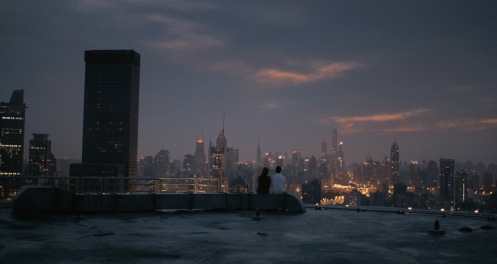“The Future Is Not Retro”: Urbanist Realities and “Her”banism

Alon Levy, an urbanist whose crunchiness I’ve greatly admired, makes a point I’ve routinely tried to make about the future of “urbanist” urban development:
If you want to see what 21st-century TOD looks like, go to the richer parts of East Asia, especially Tokyo, which builds much more housing than Hong Kong and Singapore. The density in Tokyo is anything but uniform. There are clusters of high-rise buildings next to train stations, and lower density further away, even small single-family houses fronting narrow streets far enough from train stations that it’s not economical to redevelop them. It offends nostalgic Westerners; the future often does.
via The Future is not Retro — Pedestrian Observations
Asian development patterns do seem to offend the West. A region whose rapid development, growth, and rise to affluence is most recent and thereby the most prominent bellwether for that of others has shocked international tastes to the point that there are pejoratives like “Bladerunnerization” thrown at these kinds of logistics by virtue of their existence.
But exist they do, and in a time of climate reckoning, exist they must. Media acknowledges these realities implicitly often by filming near-future settings in China, whose massive and recent cities (Shenzhen is not even 40 years old and has 20 million inhabitants in its commuter shed) are at once impressive, shocking, and unrecognizable to Western audiences.
This was the case with Her, the 2013 Spike Jonze joint about a relationship between Joaquin Phoenix and his digital assistant. In addition to being a fantasy about Millennials in midlife, it is also a vision of the future of urban development, as might be necessitated by migration and environmental realities. It is set in a massively densified Los Angeles, which does not play itself – Beijing and Shanghai largely stand in for this conceptual urbanism. It is incredibly vast, but in soft glow – a city of skyway piazzas connected by seamless and extensive rail transportation.
Ironically, this isn’t terribly different from the redevelopment of Tysons Corner underway as a consequence of the relatively recent Silver Line expansion – Tysons Corner Center built itself a front room in the form of a piazza opening onto a skyway and metro entrance, a seasonal lawn and/or skating rink lined with new entrances to its anchor stores, restaurants, and hotels. The mall was retrofit to accommodate the opportunities represented by the reality of its new logistics.
Western urbanists need to accept that densification, while necessary, will likely not take the form of either the town centers we’re familiar with nor the mid-century modernist megaprojects that gave us the likes of Pruitt-Igoe. It appears developers and planners will borrow richly from both, but create a new contemporary vision for urban life. It is the responsibility of planners to ensure that this vision not only meets the demands of the present crises of affordability and environment but represents the desires of the broader public.
